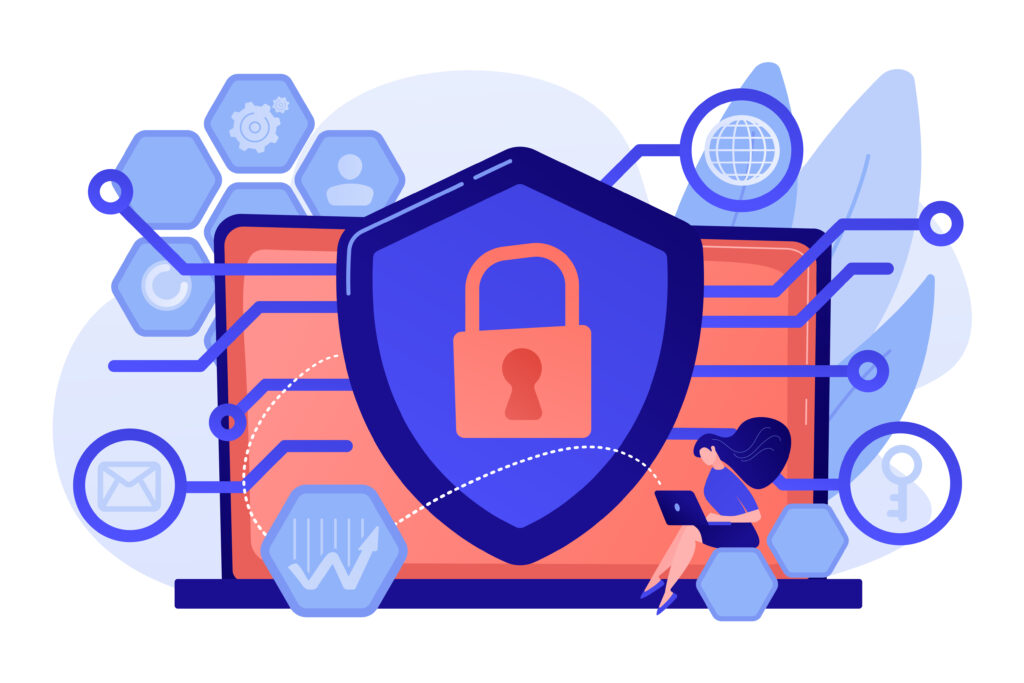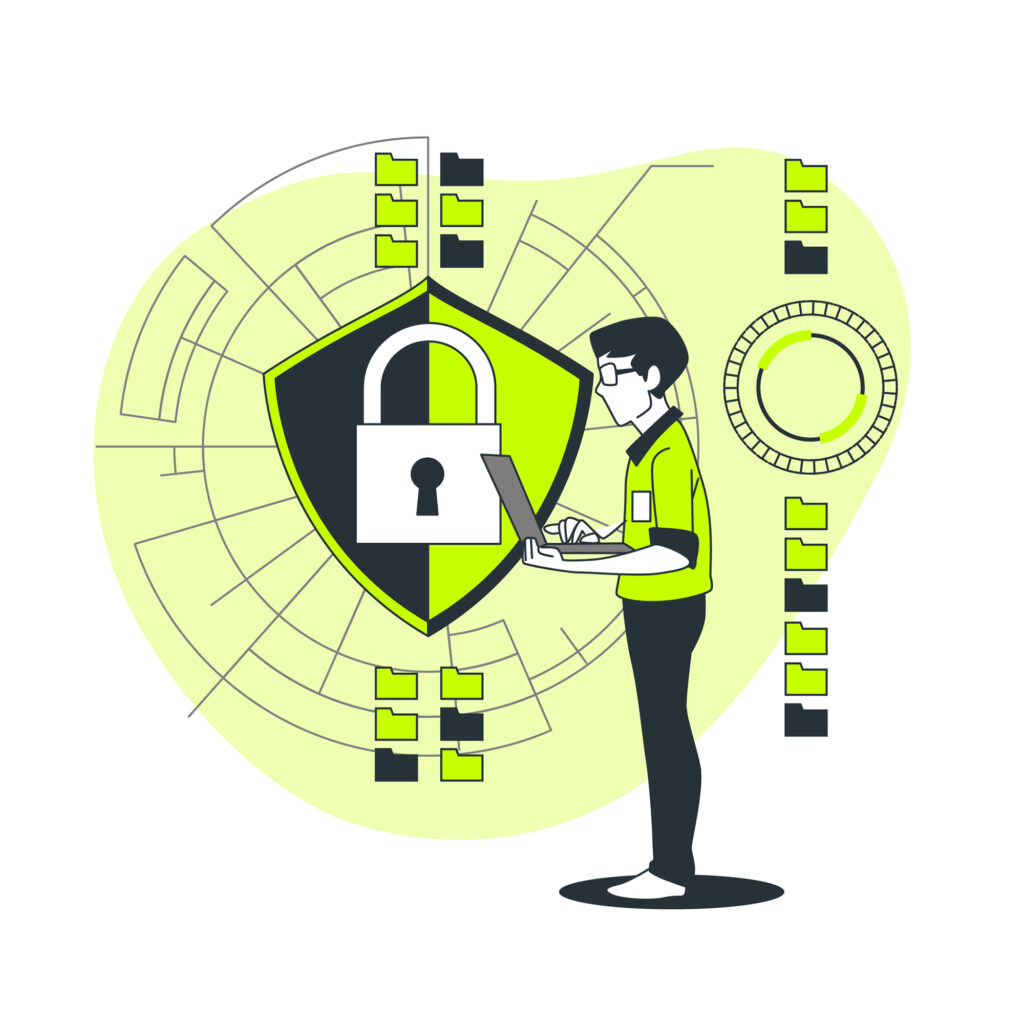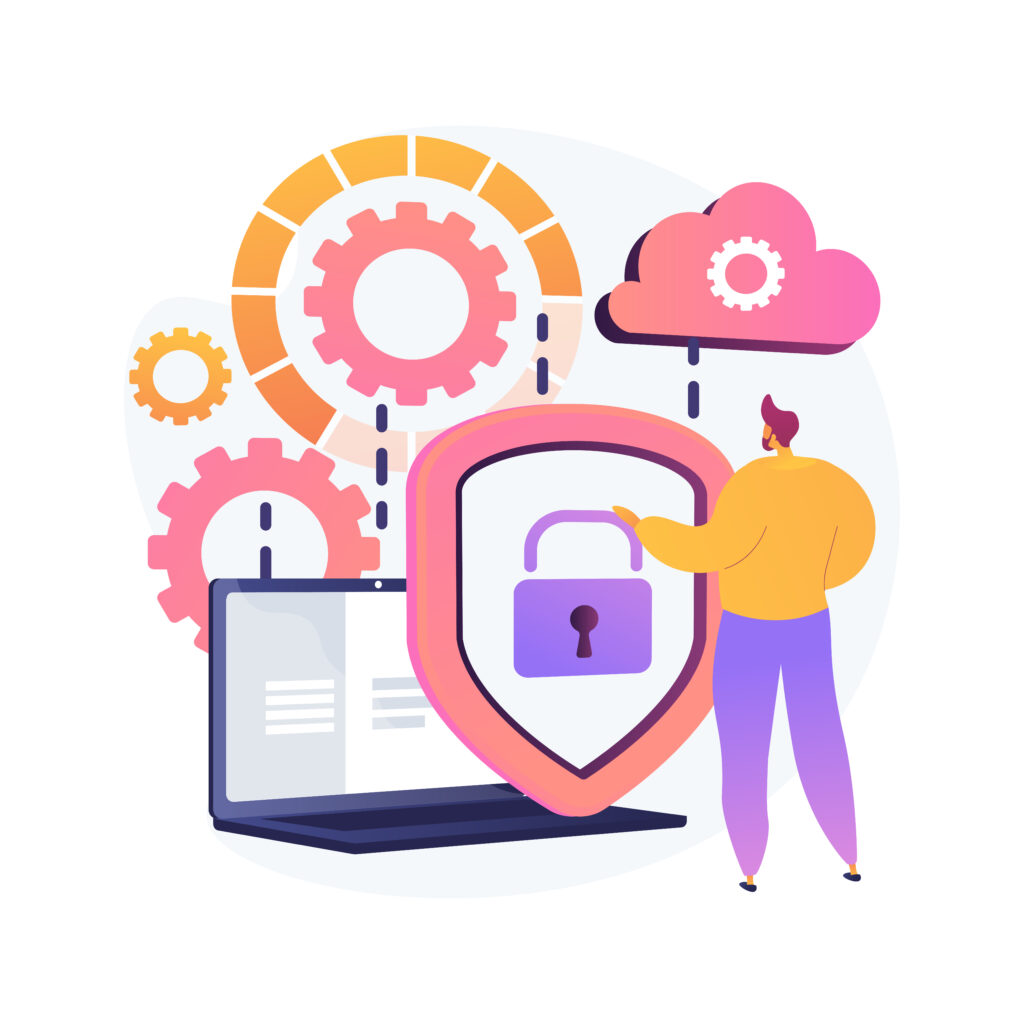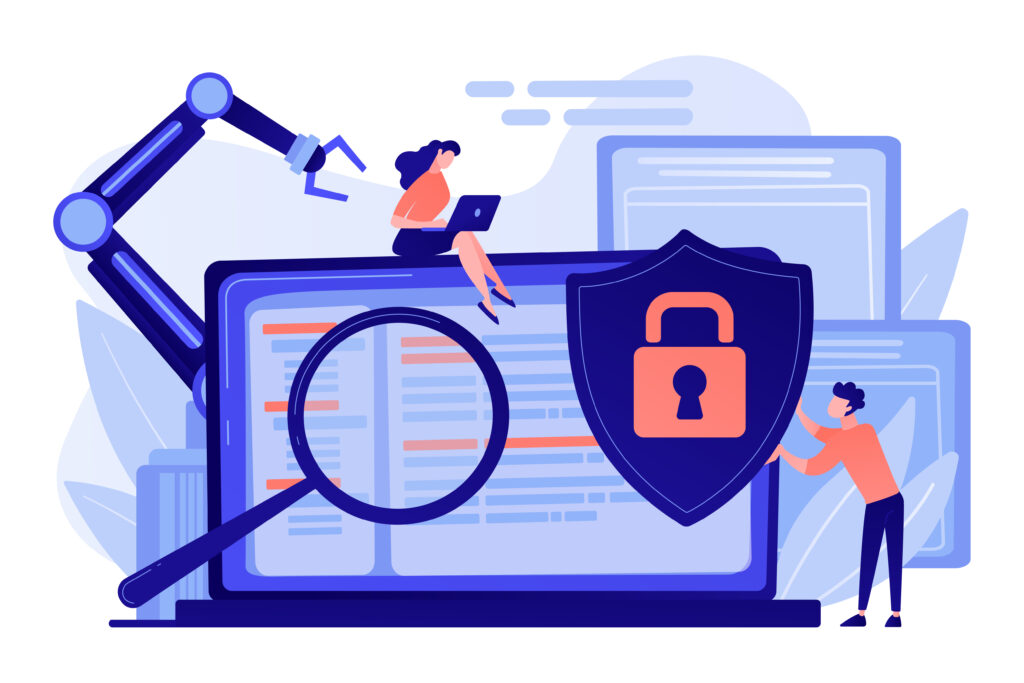Adopting AWS Best Practices For Security
Amazon Web Services (AWS) is the most comprehensive and widely adopted cloud computing platform global. It offers over 200 fully-featured services from data centers around the world. AWS provides a broad spectrum of cloud computing services, including core infrastructure technologies like compute, storage, and databases. It also includes advanced technologies such as machine learning, artificial intelligence, and the Internet of Things.

Key Features of AWS
Extensive Functionality:
AWS offers more services and features than any other cloud provider, enabling customers to migrate existing applications to the cloud and develop new applications more easily and cost-effectively.
Largest Community:
AWS boasts the largest and most dynamic community, with millions of active customers and tens of thousands of partners worldwide, encompassing startups, enterprises, and public sector organizations.
High Security:
AWS is designed to be the most flexible and secure cloud computing environment, featuring over 300 security, compliance, and governance services and features, and supporting 143 security standards and compliance certifications.
Rapid Innovation:
AWS continuously accelerates innovation, introducing new technologies that allow customers to experiment and innovate more quickly, such as serverless computing with AWS Lambda.
AWS offers a comprehensive set of best practices to ensure the security and integrity of AWS environments. These best practices encompass various security aspects, including Identity and Access Management (IAM), data protection and privacy, infrastructure protection, compliance, detection and incident response, cybersecurity awareness training, and a comprehensive cybersecurity strategy.
- Identity and Access Management (IAM)
- Data Protection and Privacy
- Infrastructure Protection
- Compliance
- Detection and Incident Response
- Cybersecurity Awareness Training
- Security at All Layers
- Comprehensive Cybersecurity Strategy
- Regular AWS Security Audits
Here is a detailed explanation of each aspect:
Identity and Access Management (IAM)
Managing access to AWS resources is a critical function provided by AWS Identity and Access Management (IAM). IAM allows organizations to define and control who or what can access specific AWS services and resources.
This involves creating and managing AWS users and groups, as well as assigning granular permissions tailored to each user or group’s needs. By establishing precise permissions, IAM ensures that individuals and applications only have access to the resources necessary for their tasks, enhancing security and operational efficiency.

Additionally, IAM supports identity federation, a feature that enables users to access AWS resources using temporary credentials issued by an external identity provider. This approach significantly boosts security by reducing the need for long-term credentials, which can be a security risk if compromised. Identity federation also simplifies access management by integrating with centralized access management tools such as AWS IAM Identity Center.
IAM also offers robust capabilities for managing users and roles. Organizations can create detailed user accounts and assign them specific roles, which come with temporary security credentials. These roles can be assumed by users or applications to perform tasks securely. This setup not only ensures secure access but also provides an audit trail for monitoring and compliance purposes, supporting a secure and well-governed cloud environment.
Data Protection and Privacy
Protecting data is paramount in maintaining the security of AWS environments, and AWS provides robust encryption options to safeguard data both in transit and at rest. For data at rest, AWS services such as S3, RDS, and DynamoDB offer built-in encryption features. This ensures that stored data is encrypted using strong encryption algorithms, protecting it from unauthorized access.

For data in transit, AWS employs encryption protocols like TLS (Transport Layer Security) to secure data as it moves over the network. This prevents eavesdropping and tampering during transmission.
In addition to encryption, implementing strong password policies is essential for safeguarding AWS accounts and resources. Organizations should enforce policies that require passwords to be complex, regularly updated, and securely stored. This practice helps to mitigate the risk of unauthorized access due to weak or compromised passwords.
Furthermore, enabling Multi-Factor Authentication (MFA) significantly enhances security by adding an extra layer of verification. MFA requires users to provide additional authentication factors beyond just their username and password, such as a code sent to a mobile device or a biometric scan.
This additional step greatly reduces the likelihood of unauthorized access, providing a more robust defense against potential security breaches.
Infrastructure Protection
Utilizing multiple Availability Zones (AZs) within AWS is a fundamental strategy for achieving high availability and fault tolerance for applications. AWS Availability Zones are distinct data centers within a region that are designed to be isolated from failures in other zones.
By deploying applications across multiple AZs, organizations can ensure that if one AZ experiences an outage or becomes unavailable, the application remains operational in the other AZs. This redundancy helps to minimize downtime and maintain service continuity, offering a robust solution for managing application reliability and disaster recovery.

In addition to leveraging multiple AZs, implementing security controls through Security Groups and Network Access Control Lists (ACLs) is crucial for protecting AWS resources. Security Groups act as virtual firewalls that regulate inbound and outbound traffic to and from AWS instances. They provide a flexible way to define rules that permit or deny traffic based on IP addresses, protocols, and ports.
Network ACLs offer an additional layer of security by controlling traffic at the subnet level, enforcing rules for both inbound and outbound traffic. Together, Security Groups and Network ACLs help ensure that only authorized traffic can access AWS resources. This will reduce the risk of unauthorized access and enhance overall network security.
Compliance
Ensuring compliance with regulations is a critical aspect of managing AWS environments, and AWS provides a range of tools and services designed to assist organizations in meeting various regulatory requirements. AWS offers services that help implement appropriate security controls, such as encryption, access management, and monitoring tools.
These services are designed to align with standards like GDPR, HIPAA, and PCI DSS, helping organizations to manage and protect sensitive data in accordance with legal and industry-specific regulations.

Additionally, AWS provides comprehensive auditing capabilities through services like AWS CloudTrail and AWS Config, which track and log changes to your AWS resources, offering visibility into actions taken within your environment. This functionality is essential for maintaining compliance and for conducting audits.
Equally important is the regular review and update of security policies. Organizations should continually assess their security policies to ensure they remain effective and aligned with evolving regulations and industry standards. As new threats emerge and regulatory requirements change, updating security policies helps address new risks and maintain compliance.
Regular reviews should involve revising access controls, encryption practices, and incident response plans to adapt to the current security situations and ensure robust protection of resources. By staying proactive with policy updates, organizations can effectively manage compliance and enhance their overall security posture.
Detection and Incident Response
Utilizing tools like Amazon GuardDuty is crucial for enhancing security within AWS environments. Amazon GuardDuty is a sophisticated threat detection service that continuously monitors AWS accounts and workloads for signs of malicious activity. It uses machine learning, anomaly detection, and integrated threat intelligence to identify unusual behavior and potential threats.
When GuardDuty detects suspicious activities, it generates detailed alerts and insights, enabling organizations to promptly investigate and respond to potential security issues. This proactive monitoring helps in minimizing the impact of security incidents and fortifying overall cloud security.

In addition to GuardDuty, monitoring VPC Flow Logs is essential for maintaining network security. VPC Flow Logs capture detailed records of network traffic flowing to and from network interfaces within a Virtual Private Cloud (VPC).
By analyzing these logs, organizations can gain valuable insights into traffic patterns, and detect unusual or unauthorized access. The process will help to identify potential threats or security incidents. This visibility is key for detecting anomalies and ensuring that network traffic complies with security policies.
Furthermore, having a well-defined incident response plan is vital for effectively managing security incidents. Organizations should prepare comprehensive plans that outline procedures for detecting, containing, eradicating, and recovering from security breaches.
A robust incident response plan ensures that teams can quickly address and mitigate the effects of an incident. It will minimize downtime and protect valuable assets. Regular testing and updating of these plans are essential to adapt to evolving threats and maintain an effective response capability.
Cybersecurity Awareness Training
Educating employees on cybersecurity risks is a fundamental component of an organization’s security strategy. Conducting regular cybersecurity awareness training is essential for informing employees about various risks and best practices for maintaining security. This training should cover critical areas such as password management, ensuring that employees understand the importance of creating strong, unique passwords and the risks associated with password reuse.
Additionally, training should address phishing and other common threats, teaching employees how to recognize suspicious emails and avoid falling victim to social engineering attacks. By equipping employees with the knowledge to identify and respond to potential security threats, organizations can significantly reduce the likelihood of successful attacks.

Enhancing security awareness across the organization goes beyond initial training. It involves creating a culture of security where employees are continuously encouraged to be vigilant and proactive about cybersecurity. This can be achieved through regular updates on emerging threats, ongoing security drills, and incorporating security best practices into daily operations.
When employees are well-informed and engaged, they become a crucial line of defense against security incidents. This contributes to a more resilient and secure organizational environment. By fostering a culture of security awareness, organizations can effectively mitigate risks and protect their valuable assets.
Security at All Layers
Applying security measures at all layers of the architecture is crucial for achieving comprehensive protection of AWS environments. Security should be addressed at the network, host, and application levels to ensure that all potential entry points are safeguarded. At the network layer, this involves configuring firewalls, security groups, and network ACLs to control and monitor traffic.
In host, security measures include implementing antivirus software, hardening server configurations, and ensuring secure access controls. At the application level, practices such as secure coding, regular vulnerability assessments, and encryption of data in transit and at rest are essential. By covering all these layers, organizations can build a robust security framework that protects against a wide range of threats and vulnerabilities.

Utilizing automation is also key to enforcing security best practices efficiently. Automation tools can help streamline and standardize security processes. It helps in regularly updating software and applying patches to address known vulnerabilities. Automated monitoring systems can continuously scan for security issues and alert administrators to potential threats.
Additionally, automation can enforce security configurations consistently across all systems. This will reduce the risk of human error and ensure compliance with security policies. By integrating automation into security operations, organizations can enhance their ability to maintain a secure environment and respond promptly to emerging threats.
Comprehensive Cybersecurity Strategy
Plan and Regularly Review a Comprehensive Strategy:
Organizations should develop and regularly review a comprehensive cybersecurity strategy tailored to their specific cloud challenges. This involves identifying and mitigating risks, implementing security controls, and periodically updating the strategy.
Regular AWS Security Audits
Regular security audits are essential for maintaining a robust defense against vulnerabilities in an AWS environment. As threats evolve and new vulnerabilities are discovered, what is considered secure today may become a potential weakness tomorrow.
Regularly scheduled audits help organizations proactively identify and address security issues before they can be exploited by malicious actors. This ongoing assessment ensures that the security posture remains strong despite changes in the threat, configuration updates, or system modifications.
Conducting these audits is a cornerstone of a proactive security strategy. It involves systematically reviewing and evaluating the AWS environment to uncover potential weaknesses and ensure compliance with security policies and best practices.

Through regular audits, organizations can continuously monitor their security measures, assess their effectiveness. You can make necessary adjustments to address emerging threats. This vigilant approach helps maintain a high level of security and reduces the risk of data breaches or unauthorized access.
By adhering to regular security audits and implementing recommended best practices, organizations can significantly bolster the security of their AWS environments. This proactive stance helps protect valuable data and resources. It ensures that security measures evolve alongside the threats to safeguard against potential risks effectively.
[Want to learn more on the aws best practices for security? Click here to reach us.]
Conclusion
Implementing AWS best practices for security is essential for safeguarding your cloud environment against potential threats. By effectively managing identity and access, protecting data, securing infrastructure, ensuring compliance, and maintaining vigilance through detection and incident response, organizations can create a robust security framework.
Educating employees on cybersecurity, applying security measures at all layers, and conducting regular security audits further reinforce this framework. This ensures comprehensive protection. By following these best practices, organizations can enhance the security of their AWS environments. This ensures the safety and integrity of their data and resources.
For organizations seeking expert assistance in implementing these best practices, Bobcares offers comprehensive AWS support services. Their team of experienced professionals can help you navigate the complexities of AWS security. This provides tailored solutions to ensure your cloud environment remains secure and compliant. With Bobcares, you can confidently protect your AWS resources and focus on driving your business forward.







0 Comments